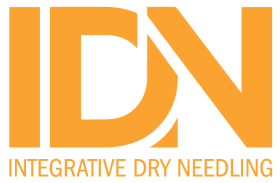J Clin Exp Dent. 2023 May 1;15(5):e366-e375. doi: 10.4317/jced.60312. eCollection 2023 May.
ABSTRACT
BACKGROUND: To evaluate the effectiveness of dry needling (DN) and instrumental myofascial release (IMR) therapies in the cervico-cranio-mandibular system through pain, bite force, and distribution of occlusal contacts in patients with muscular temporomandibular disorders.
MATERIAL AND METHODS: Thirty patients were divided into treatment groups: DN (n=15) and IMR (n=15). Therapeutic efficacy regarding pain perception and tolerance of masticatory, facial, and cervical muscles, bite force, and distribution of occlusal contacts were analyzed in this observational longitudinal clinical study pre/post-intervention and pre/post one month of therapeutic intervention. The data were tabulated and statistically analyzed (repeated measures and Bonferroni post-hoc test, p<0.05).
RESULTS: There was a statistically significant difference in pain between the groups in the comparison of pre- and post-intervention with effect on time versus intervention in the head and neck. Pain perception and tolerance showed a statistical effect of time on the temporal, suboccipital, sternocleidomastoid, mental (right and left), right masseter, and left trapezius muscles. There was a statistically significant effect of the intervention on the mentalis, supraorbital, and infraorbital (right and left) muscles. There was a statistically significant effect of the interaction on the upper masseter (right and left), anterior temporal (left), suboccipital, sternocleidomastoid, and mentalis (left) muscles. There was an increase in post-intervention molar bite force in the groups, with a statistical effect on time versus intervention in the right and left regions. Contact of occlusal forces at the maxilla/mandible interface showed a difference between the mean times on teeth 26-36 after versus 1 month after the intervention.
CONCLUSIONS: The two therapeutic techniques are viable for the treatment of muscular temporomandibular disorders; however, IMR proved to be more effective immediately after the intervention and after one month. Key words:Temporomandibular disorders, pain, masticatory muscles, facial muscles, cervical muscles, dry needling, instrumental myofascial release.
PMID:37214753 | PMC:PMC10198697 | DOI:10.4317/jced.60312


